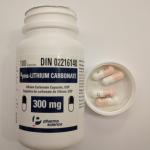Lithium is quite an element.
suicide
Writing in her blog at the National Institute On Drug Abuse, Dr. Nora Volkow and co-author Dr.
The news out of the United Kingdom hasn't been rosy as of late. Brexit has plunged the country into political chaos. Now, the latest report feels like rubbing salt in the wound.
A 16-year-old girl uses her social media account to post a question: Should I kill myself? Sixty-nine percent of people who responded said yes. So she did.
Given unintentional injuries are the #1 cause of death among people ages 1 to 44 with 97% to 99% of those caused by our own errors and mistakes (e.g.
Suicide rates are up in the United States. In some places, they are way up.
SPOILER ALERT: A key theme in the movie will be revealed in this article.
A new report published in BMJ Journal: Injury Prevention opts to reframe how we interpret data on preventable, premature deaths by using an “en
Everybody hates heat waves. We hate them so much, in fact, that heat waves have a measurable detrimental impact on our society.
The Centers for Disease Control and Prevention (CDC) is taking action on possibly false data reported in a highly cited paper on suicide rates stratified by occupat












